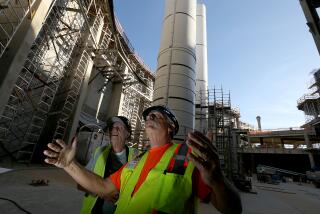CERN gets ready to smash more protons together
The Large Hadron Collider at CERN is once again getting ready to smash protons together, hoping to find evidence of elusive and exotic particles that have never been detected before.
The largest and fastest particle accelerator in the world, located in Geneva, will officially start up again in March. When it is turned on, scientists and engineers say the two beams of protons that fly around its 17-mile loop at close to the speed of light will collide with nearly double the energy of the previous run.
The collider’s first stint of proton smashing led to the discovery of the Higgs boson or Higgs particle -- a long theorized but never before seen subatomic particle. It exists for just a fraction of a second, and yet its discovery helps explain the existence of all the mass in the universe.
Scientists are not sure what they will find this time around, but some possibilities include particles associated with dark energy and dark matter, as well as particles that could provide evidence for a theory known as supersymmetry. This theory holds that there is a mirror universe made up of invisible particles that have mass but do not react with light, and that correspond to particles that we can detect.
“There are many possible scenarios for how this new physics would show up,” said Vivek Sharma, a professor at UC San Diego who helped discover the Higgs boson with the Large Hadron Collider’s CMS experiment. “We are really out there in the Wild West, looking for new things.”
The collider creates its proton collisions by hurling two beams of highly energized protons at each other. The last time it was turned on, the two beams were each accelerated to an energy of 4 TeV (teraelectron volts), creating a collision with a total energy of 8 TeV. Thanks to a series of upgrades, the two beams will now be sped up to 6.5 TeV each creating a collision with the total energy of 13 TeV.
These higher energy collisions will allow scientists to see larger particles than they saw last time around. To understand why, think back to Einstein’s famous equation E=mc 2 -- in which E is energy, m is mass, and c is the speed of light.
“What we are trying to do through these protons smashing into each other is to create a tremendous bundle of energy in a very small time period, and the more energy we produce, the more mass we can produce,” Sharma said.
For the last two years the collider has been undergoing repairs and changes in preparation for its next, super-powered run. Already it has already been cooled to its normal operating temperature of 1.9 degrees Kelvin, or -456.25 degrees Fahrenheit.
“Many people have theories and conjectures, but it is all fantasy until you have the scientific experimental proof,” Sharma said. “That is what the excitement is about. The LHC gives us a window to a part of the universe we don’t know much about.”
Science rules! Follow me @DeborahNetburn and “like” Los Angeles Times Science & Health on Facebook







